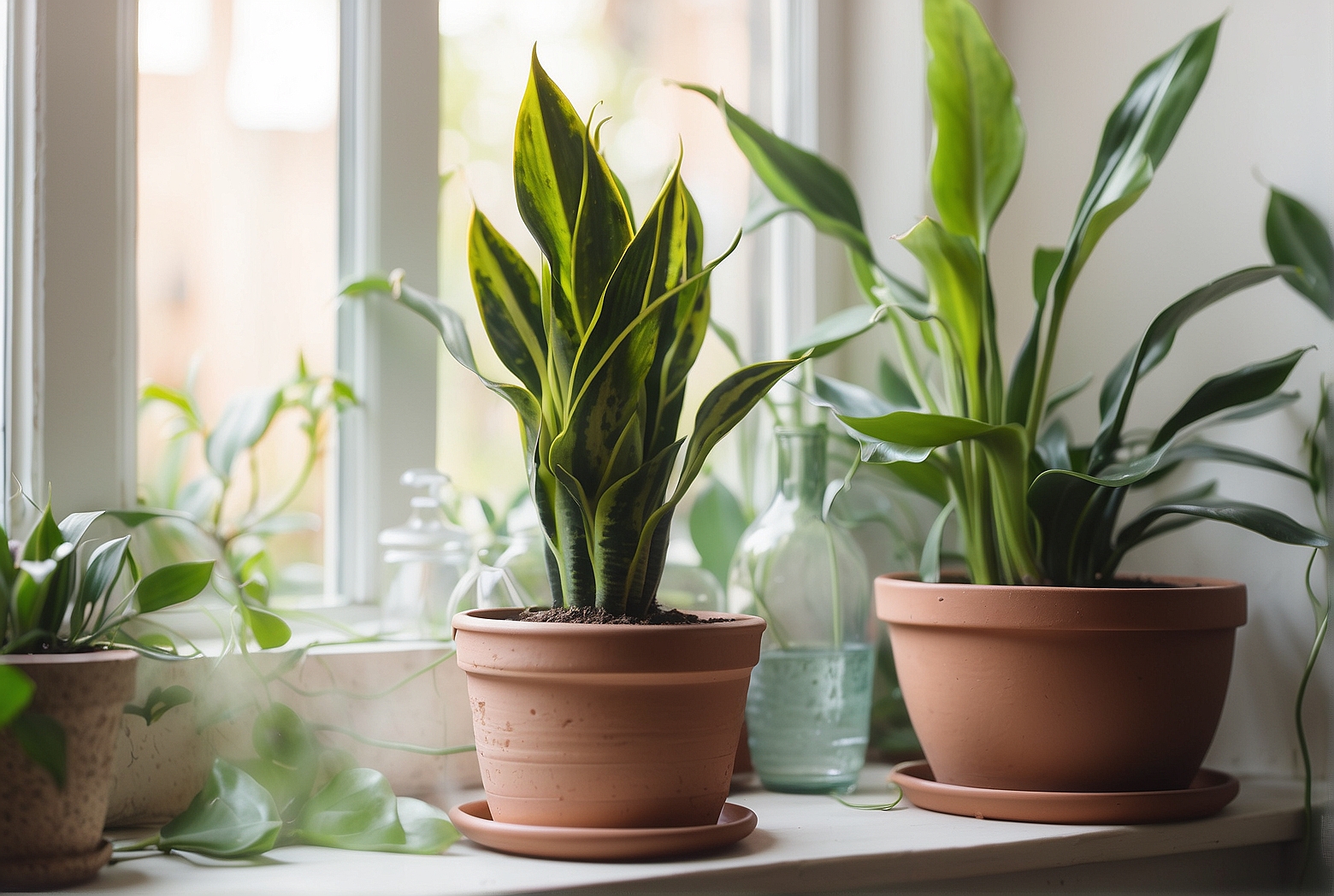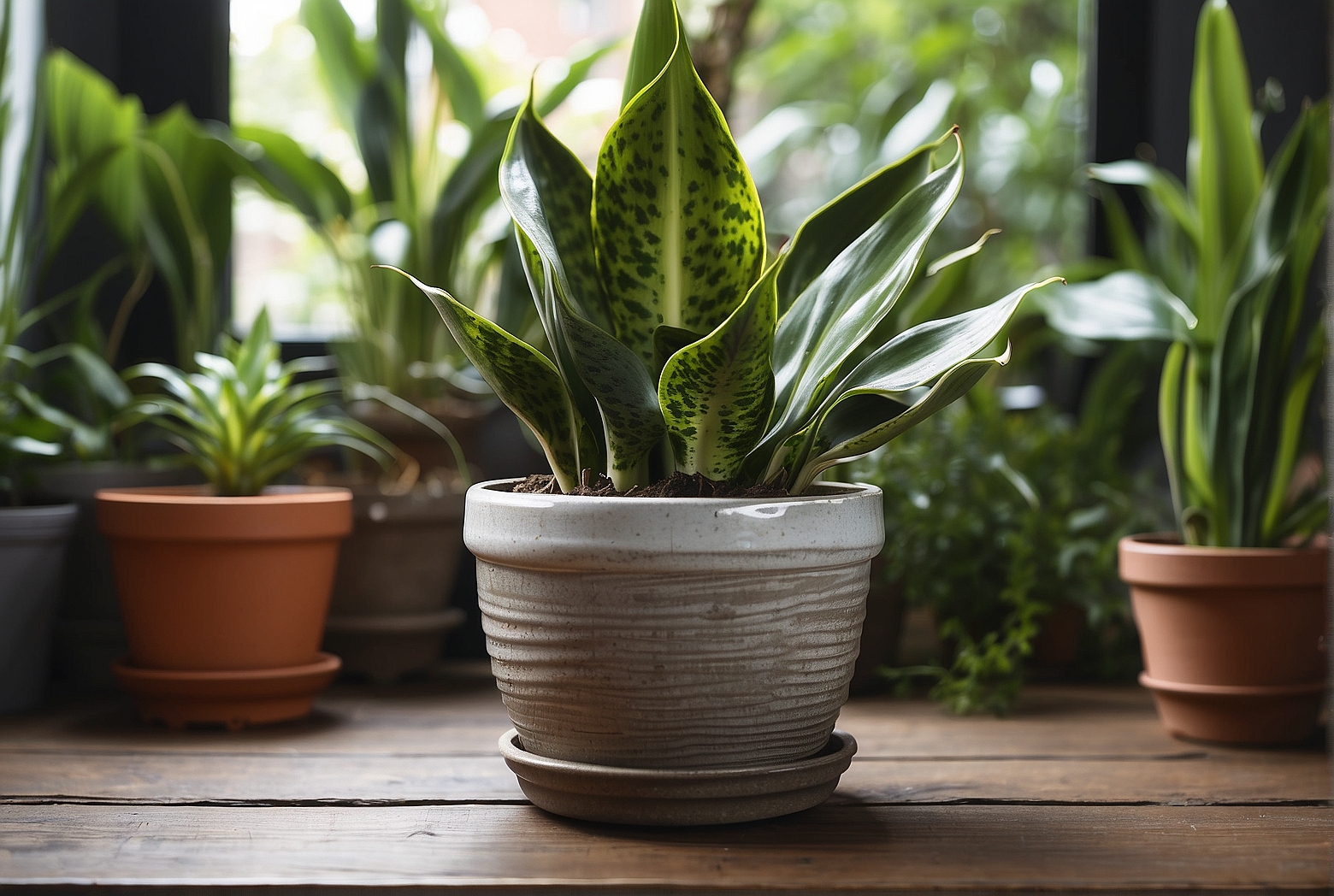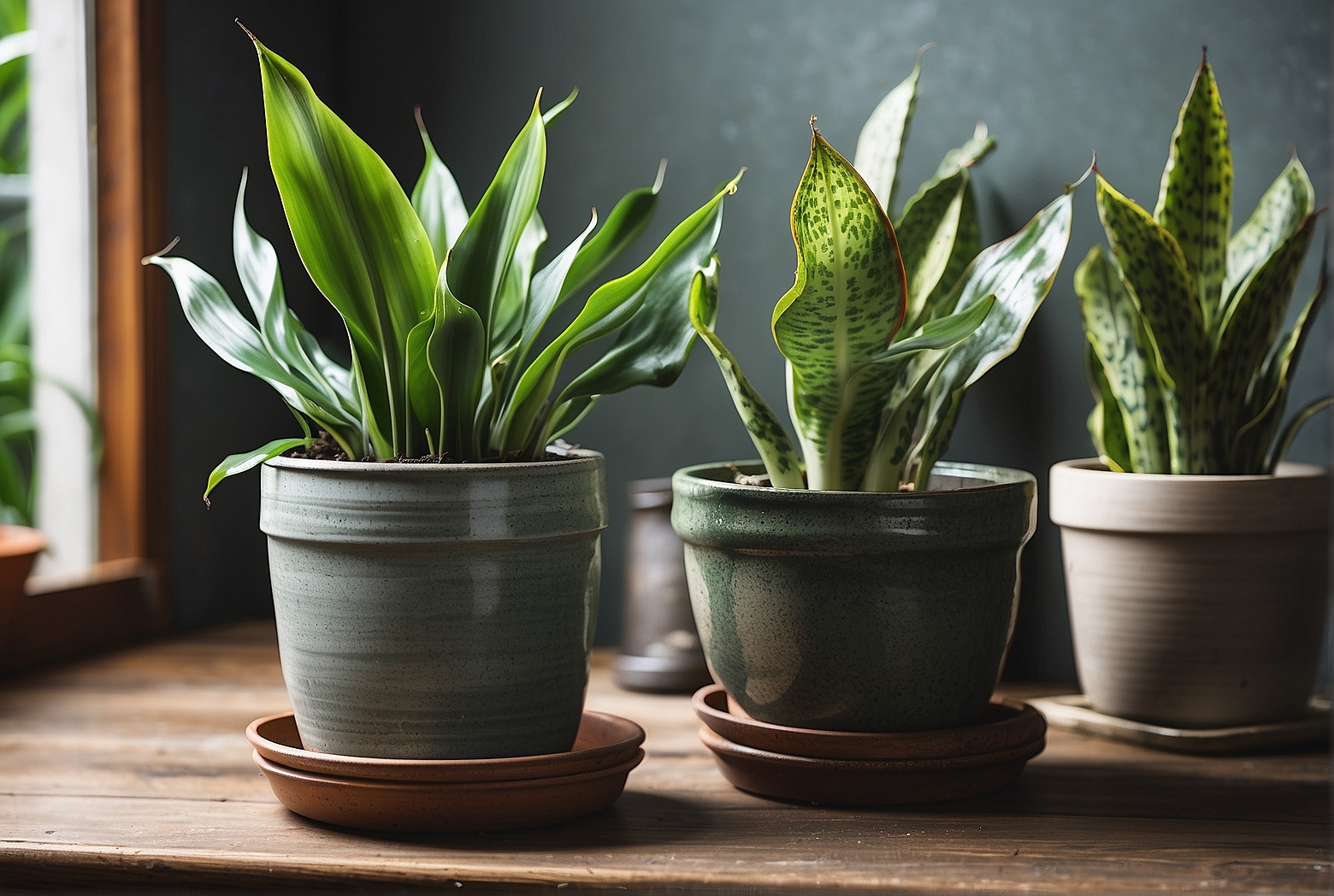Last Updated on April 13, 2024 by Tony Manhart
So you’ve brought home a lovely snake plant, but now you’re wondering how often you should water it to keep it thriving. Well, fret not, because we’ve got all the answers you need! watering a snake plant can be a bit tricky, as this beautiful and resilient plant has different watering needs compared to other houseplants. In this article, we’ll dive into the depths of snake plant care and reveal the secret behind finding the perfect watering schedule for this low-maintenance beauty.
Understanding the Snake Plant
Snake Plant Overview
The snake plant, also known as Sansevieria, is a popular indoor plant known for its striking sword-like leaves and low-maintenance nature. It is native to West Africa and belongs to the family Asparagaceae. Snake plants come in various species, each with its unique characteristics and care requirements. These plants are not only aesthetically pleasing but also offer numerous benefits, such as improving air quality by removing toxins. Understanding the characteristics and watering needs of snake plants is essential to ensure their health and longevity.
Features of a Snake Plant
Snake plants have long, thick leaves that grow upright from a central base or rhizome. The leaves are usually green, sometimes with variegated patterns or yellow edges, depending on the species. They can range in height from a few inches to several feet. Snake plants are renowned for their ability to tolerate low light conditions, drought, and neglect, which makes them an excellent choice for beginners or people with busy lifestyles. These hardy plants can thrive in a wide range of temperatures, making them an ideal choice for indoor environments.
Factors Affecting Watering Frequency
Snake Plant Species
Different species of snake plants have varying water requirements. Some species, like Sansevieria trifasciata, prefer drier conditions and can adapt well to infrequent watering. On the other hand, species like Sansevieria cylindrica may require more regular watering. Understanding the specific species you have will help you determine the appropriate watering frequency.

Environmental Conditions
The environmental conditions in which your snake plant is placed play a crucial role in its watering needs. Indoor humidity, temperature, and light intensity can significantly affect how often you should water your plant. In general, snake plants prefer bright but indirect light and moderate to low humidity levels. If your plant is exposed to high-intensity light or is placed near a heat source, it may require more frequent watering.
Pot Size and Drainage
The size of the pot your snake plant is in can impact its watering needs. Smaller pots tend to dry out more quickly, requiring more frequent watering. Additionally, pots without drainage holes can lead to waterlogged soil, which can be detrimental to the health of the plant. Ensuring that your pot has sufficient drainage holes or using a well-draining potting mix is crucial for maintaining optimal soil moisture levels.
Soil Type
The type of soil your snake plant is growing in can affect its watering frequency. Snake plants prefer well-draining soil that allows excess water to escape easily. A good potting mix for snake plants consists of a combination of peat moss, perlite, and coarse sand. This type of soil mixture helps prevent waterlogged conditions and allows the roots to access oxygen, ensuring healthy growth.
Signs That Your Snake Plant Needs Water
Wilting or Drooping Leaves
One of the most obvious signs that your snake plant needs water is when its leaves start to droop or wilt. This is a natural response from the plant to conserve moisture. If you notice that your snake plant’s leaves are losing their rigidity and becoming floppy, it’s a good indication that it needs watering.

Yellow or Brown Leaves
Another sign of inadequate watering is the appearance of yellow or brown leaves. When a snake plant lacks sufficient water, it may start to shed older leaves to conserve moisture for new growth. If you notice discoloration or browning of leaves, it’s a sign that you need to adjust your watering routine.
Dry and Cracking Soil
If the soil surrounding your snake plant feels dry to the touch and cracks are forming on the surface, it’s a clear indication that the plant needs water. Snake plants prefer slightly moist soil, so allowing the soil to dry out excessively between waterings can cause stress and lead to various issues.
Visible Roots
If you notice that the roots of your snake plant are visible on the surface of the soil or protruding from the drainage holes, it’s a sign that the plant needs more water. Exposed roots indicate that the soil has become too dry and that the plant is at risk of dehydration.
Recommended Watering Schedule
Watering Frequency
The frequency at which you should water your snake plant depends on various factors discussed earlier, such as species, environmental conditions, pot size, and soil type. As a general guideline, snake plants typically require watering every 2-4 weeks. However, it’s crucial to monitor the plant’s moisture needs and adjust the watering frequency accordingly.
Watering Amount
When watering your snake plant, it’s essential to provide enough water to thoroughly moisten the soil. Water until you see the excess water draining out of the pot’s drainage holes. Avoid leaving the plant in standing water, as this can lead to root rot.
Watering Techniques
To ensure proper watering, it’s recommended to use the drench-and-drain method. This involves thoroughly saturating the soil with water until it reaches the point of runoff. Allow the excess water to drain out before returning the plant to its usual location. This approach ensures that the entire root system receives adequate moisture.
Testing the Soil Moisture
Using a Moisture Meter
A moisture meter is a handy tool for determining the moisture level in the soil. By inserting the probe into the soil, you can get an accurate reading of the moisture content. This can help you gauge when to water your snake plant and avoid over- or underwatering.
Feeling the Soil Texture
An alternative method to determine soil moisture is by feeling the soil with your fingers. Stick your finger about an inch deep into the soil and assess its moisture level. If it feels dry, it’s an indication that your plant needs watering.
Monitoring Leaf Color and Firmness
The color and firmness of your snake plant’s leaves can provide valuable insights into its watering needs. Healthy snake plants have vibrant green leaves, while underwatered or dehydrated plants may develop dull or faded leaf color. Additionally, water-stressed plants may have wrinkled or less turgid leaves. Regularly observing these signs can help you adjust your watering routine accordingly.
Tips for Watering a Snake Plant
Avoid Overwatering
One of the most common mistakes in watering snake plants is overwatering. Snake plants are highly susceptible to root rot, which can occur when the soil remains excessively wet. To prevent overwatering, ensure that the soil has dried out before watering again.
Promote Proper Drainage
To avoid waterlogged soil and prevent root rot, it’s crucial to promote proper drainage. Ensure that your pot has sufficient drainage holes and use a well-draining potting mix. Excess water should be able to escape freely, preventing water from pooling around the roots.
Use Room Temperature Water
Snake plants prefer to be watered with room temperature water. Avoid using cold or hot water, as extreme temperature shocks can stress the plant. Let your tap water sit out for a day before watering to allow any chlorine or other additives to dissipate.
Consider Seasonal Changes
The watering needs of snake plants may vary with the changing seasons. During the growing season, typically spring and summer, the plant may require more frequent watering due to increased growth. In contrast, during the dormant period in fall and winter, snake plants require less water.
Common Mistakes in Watering Snake Plants
Neglecting or Forgetting to Water
Snake plants are drought-tolerant, but they still require regular watering. Neglecting to water your snake plant can lead to dehydration and adversely affect its health. Set a reminder or establish a routine to ensure you don’t forget to water your plant.
Excessive Watering
Overwatering is a common mistake that can lead to root rot and ultimately kill your snake plant. Avoid watering too frequently or using excessive amounts of water. Always allow the soil to dry out before watering again.
Watering on a Fixed Schedule
Watering on a fixed schedule without considering the plant’s individual needs can be problematic. The frequency of watering should be adjusted based on various factors, such as environmental conditions and the plant’s moisture requirements.
Using the Wrong Type of Water
Using the wrong type of water can have negative effects on your snake plant. Tap water that contains excess minerals and chlorine can accumulate in the soil over time, leading to salt buildup. Opt for filtered or distilled water to prevent these issues.
Overcoming Watering Challenges
Reviving an Overwatered Snake Plant
If you accidentally overwatered your snake plant and it shows signs of root rot, immediate action is required to save your plant. Remove the plant from its pot, gently wash away any soil, and trim off any rotting or mushy roots with sterile shears. Repot the plant into fresh, well-draining soil, and adjust your watering habits to prevent future overwatering.
Dealing with Underwatered Snake Plant
An underwatered snake plant may require some extra care to restore its health. Gradually increase the frequency of watering, taking care not to overcompensate and drown the plant. Mist the leaves regularly or place the plant on a tray filled with water and pebbles to increase humidity.
Adjusting Watering Frequency
If you notice any signs of over- or underwatering, it’s essential to adjust your watering frequency accordingly. Take note of the plant’s response to your watering routine, and make the necessary changes. Consider the environmental conditions, season, and the plant’s specific species to find the right balance.
Alternative Watering Methods
Bottom Watering
Bottom watering is a technique where the plant absorbs water from the bottom rather than the top. This method involves placing the potted snake plant in a tray of water and allowing the soil to absorb the moisture through the drainage holes. Bottom watering can help prevent overwatering and promote healthy root growth.
Using a Self-Watering Pot
Self-watering pots feature a built-in reservoir that gradually supplies water to the plant as needed. These pots are equipped with a wicking system that draws water from the reservoir into the soil. Self-watering pots can be a convenient option for busy individuals or those who struggle with proper watering techniques.
Capillary Mat or Wick System
Capillary mats or wick systems can be used to provide a constant supply of moisture to your snake plant. These systems involve placing a mat or wick in contact with the plant’s potting mix and supplying water to the mat. The water is then drawn up by the plant through capillary action, ensuring a consistent level of soil moisture.
Conclusion
Proper watering is essential for the health and vitality of your snake plant. Understanding the factors influencing watering frequency, recognizing signs of water need, and implementing the recommended watering schedule will help your snake plant thrive. Remember to adjust your watering routine based on the specific needs of your plant, and never be afraid to experiment with alternative watering methods. With the right care, your snake plant will continue to bring beauty and serenity to your indoor space for years to come.
Tony Manhart is a passionate gardener who has been tending to gardens for over 20 years. He takes pride in creating beautiful outdoor spaces with plants, trees, and shrubs that can thrive in any environment. He loves to share his knowledge with others and has taught classes on gardening basics and advanced techniques. He is committed to sustainability, using natural and organic methods to create and maintain gardens. He also works with local organizations to create green spaces for communities. When he’s not gardening, Tony enjoys hiking, reading, and spending time with his family.


